I am using Lechuza Pon now for more than 3 years.
When I started caring for houseplants I started with regular potting soil which was a big mistake.
A lot of tropical plants need a loose well-draining potting mix that consists of chunky bits such as perlite, pumice, orchid bark, and charcoal.
After choosing the right soil comes the challenge of watering houseplants correctly.
It shouldn’t be too much water but also not too little.
This can be cumbersome and the negative effects of overwatering can be that you lose your leafy friend.
So it is not surprising that I was looking for an alternative and found Lechuza Pon that I am going to fully review in this article.
We get commissions for purchases made through links in this post.
What is Lechuza Pon?
Lechuza Pon is an inorganic potting substrate consisting of mineral stones and added in slow-release fertilizer. It has an air/water ratio of 45% water and 55% air. It is well-draining and allows for constant airflow to the roots of plants. Lechuza planters have a water reservoir and a wick that allow for constant watering through the capillary effect as found in passive hydroponics systems.
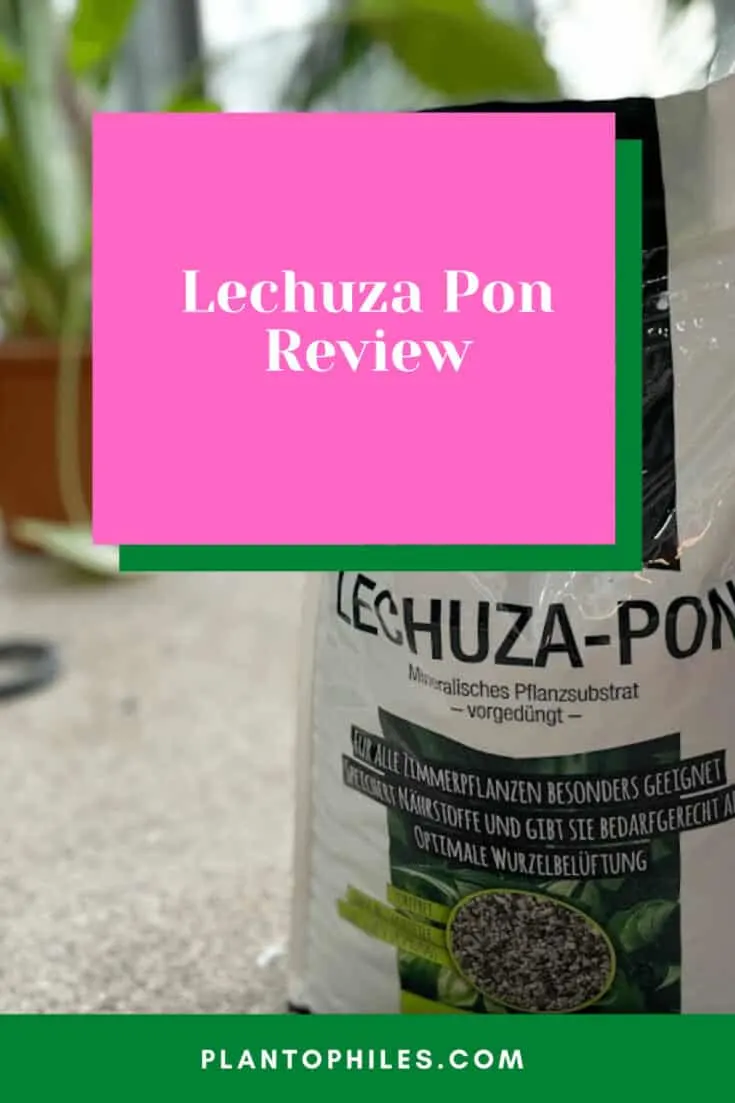
Lechuza Pon Review
Table of Contents
Lechuza Pon Review
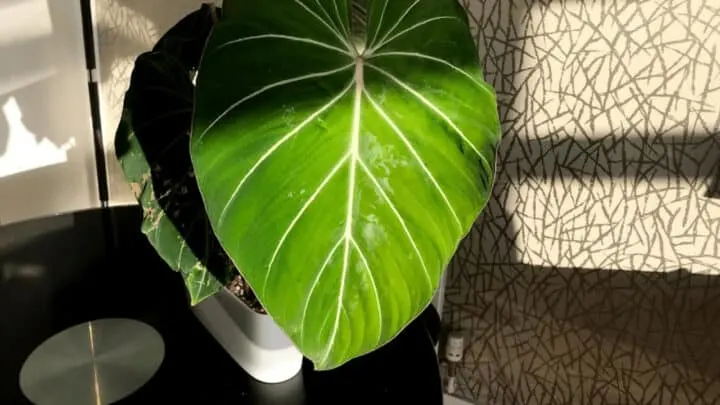
Philodendron Gloriosum loving its life in Lechuza Pon (Planter Delta 20)
I am caring mostly for aroid plants such as Monstera and Philodendron.
These plants are mostly climbers, some of them such as Philodendron Gloriosum, and others are crawlers.
What they have in common is that they need very airy, well-draining soil.
It took me some time to understand the concept, but air needs to be able to flow to the roots constantly.
Otherwise, there is a chance of root rot developing.
This is when roots are rooting away.
It is highly infectious, happens when you are watering too much in combination with a dense potting mix.
At the beginning of keeping houseplants, this used to happen to me a lot.
I was using the wrong substrate and was also watering too much.
This was about 3 years ago and I was looking for a new solution.
A system where I do not have to worry too much about watering and where I do not have to mix my own potting substrate.
This is when I ordered my first Lechuza planter that comes with some Lechuza pon already included.
These are my findings after using Lechuza Pon for years for my Monstera, Philodendron, Cacti, and Begonia plants.
Pros
- Great plant growth
- Fantastic root systems
- You don’t have to mix your own potting substrate
- The pon is heavy, so even climbing plants won’t tip over
- Watering is a breeze. You fill up the water reservoir and your plants are sufficiently watered for weeks (2-3 weeks)
- When using Lechuza Pon you can go on holiday for several weeks no problem
- Lechuza Pon substrate doesn’t decompose quickly
- Planters look great and are available in different colors
- Very durable and sturdy high-quality planters
Cons
- You cannot control the fertilizer that is added
- Not suited for very fragile and baby plants as the added in fertilizer can be too much
- Water level indicator breaks easily and is not always accurate
- Planters get very dirty after a while as debris and roots are accumulating. The roots attach to the inside of the planter and grow into the water reservoir
- Plant pests such as thrips will still infest your plants and lay eggs.
- Not a cheap solution as planters and substrate are costly
- Mold can build on the top of the substrate that needs to be removed
What comes with a Lechuza Planter

More crawling Philodendron in Lechuza Pon and Planters
The Lechuza planters all come with the following as well as some Lechuza pon already included:
Contents:
- Planter
- Planter liner
- Water level indicator
- Some Lechuza pon mix
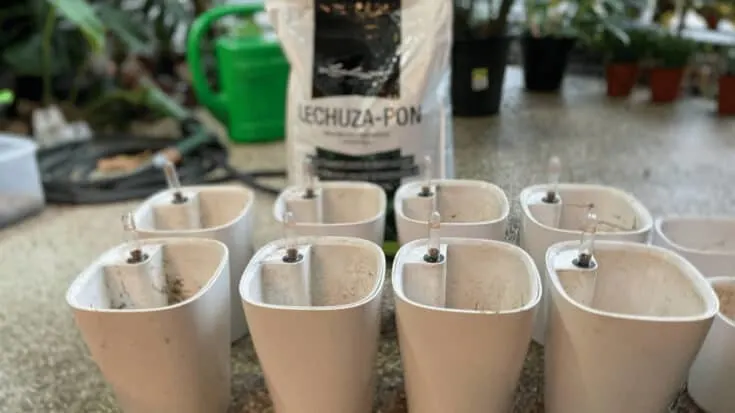
Some of my used Lechuza Deltini Planters
Conclusion regarding using Lechuza Pon
As you can see I listed several advantages and disadvantages of using Lechuza Pon.
In the end, what counts for me personally is how my plants are doing.
The truth is, my plants love Lechza Pon.
The root systems go crazy in Lechuza Pon due to the air pockets and airflow that the Lechuza system allows.
In addition, your plants are watered constantly.
The nutrients that are present in the form of slow-release fertilizer in the substrate release micro and macronutrients to the plants all the time.
This results in vigorous growth.
I have countless Lechuza planters such as the Deltini and Delta.
Deltini is great for climbers such as Monstera Adansonii, Pothos, and climbing Philodendron that do not get too big.
Lechuza Delta is great for crawlers such as Philodendron Mamei, Philodendron Gloriosum as these planters are wide and slim.
Perfect for plants to crawl.
For larger plants such as Monstera Deliciosa, you will want something bigger such as Lechuza Classico, Cube, or Cubico.
Lechuza Pon Ingredients
According to Lechuza, the Lechuza Pon substrate consists of the following ingredients:
- Lava stone
- Zeolite
- Washed Pumice
- Slow-release fertilizer
The lava stone, Zeolite, and Pumice are porous and will make sure water is wicked up and nutrients are stored and reach the roots of your plants.
The slow-release fertilizer is already added to the substrate mix and will last for 6 months according to the supplier.
Available Lechuza Pon Bag Sizes
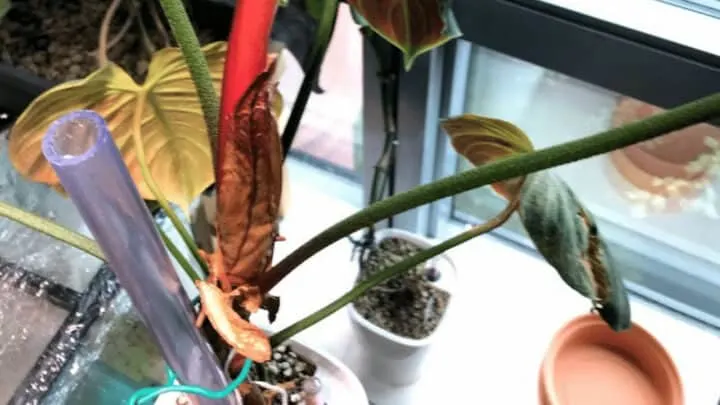
Philodendron El Choco Red in Pon
Lechuza Pon substrate is available in different sizes from 0.8 gallons (3l) bags to 6.6 gallons (25l) bags.
It is important to realize that whenever you buy a planter you will get some pon already with it.
This can be sufficient to fill a planter but will heavily depend on the size of your plant and also the root system and the substrate that you add to the planter.
Available Lechuza Granulated Hydroponic Soil bag sizes:
- Lechuza Pon 3l – 0.8 gallons
- Lechuza Pon 6l – 1.6 gallons
- Lechuza Pon 12l – 3.2 gallons
- Lechuza Pon 25l – 6.6 gallons
Lechuza Pon Alternatives
There are multiple available Lechuza Pon alternatives mostly developed for Bonsai and Cactus plants.
Boon Bonsai Soil Mix consists of pumice, lava, charcoal, and Akadama which is a clay-like substance.
A similar alternative is the Bonsai All-Purpose Mix with Pumice, Clay, Lava, and Pine Bark.
The Pine Bark differentiates this mix from the other two as it is an organic ingredient.
The main differentiator is often the added in slow-release fertilizer as very few potting mixes contain pre-added fertilizer.
Lechuza Pon vs. Perlite
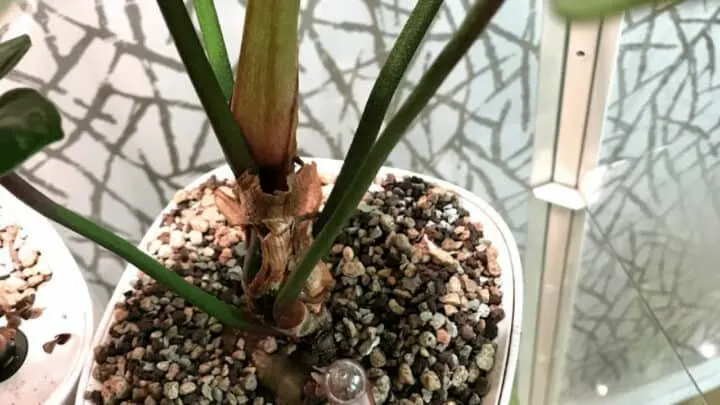
Lechuza Pon Substrate
Perlite is a granular substance that is lightweight.
It is often used to make soil airier and is found in lots of potting mixes.
Perlite is expanded volcanic glass that is heated to temperatures above 183 degrees Fahrenheit (1000 degrees Celsius).
In some ways, Lechuza Pon and perlite are very similar as both are very airy and porous.
They allow for well-draining soil and airflow to the roots.
The main difference is that Lechza Pon is a mix of different ingredients such as Lava stone, zeolite, and pumice as well as fertilizer whereas perlite has one source only.
In addition, perlite is much much lighter than Lechuza Pon and it is neutral and doesn’t contain any nutrients.
With perlite, you have to use additional fertilizer.
Regarding perlite, I found it to be so light that it can be difficult to hold heavier plants in as also moss poles and supporting structures and sticks are harder to place.
A further disadvantage is that perlite is very very dusty and squished easily leaving residue everywhere.
In conclusion, perlite is more of an ingredient for potting mixes than a standalone.
Although I personally know lots of people using perlite to propagate cuttings because of its wicking function and the fact that it is neutral and inorganic.
How to Use Lechuza Pon
It is important to talk about how to correctly use Lechuza Pon as I used it wrong in the beginning.
When using Lechuza Pon, you don’t have to remove the soil from the roots of your plants!
I repeat it once again.
You can leave on the potting soil that is already on the roots.
Effectively you can take the whole plant including the soil you have in the previous pot and plant it into the Lechuza planter and add in Lechuza Pon.
In the beginning, I stressed my plants and surgically removed all the soil from the roots of my plants before moving them over to Lechuza.
This procedure was learned from moving plants from the soil over to clay balls also called leca or hydroton.
Just note that you can use 100% Lechuza Pon or you can have a mix of soil and Lechuza Pon.
Just don’t mix Sphagnum Moss with Pon as this mix will be too airy and result in root rot.
So how do you use Lechuza Pon?
Follow these steps:
- Buy a Lechuza Planter such as a Deltini (Climbers), Delta (Crawlers), Classico, Cube, or Cubico (bigger plants).
- Buy a bag of Lechuza Pon Substrate as you will need it further down the road. There is some Pon already included in the planters but it might not be sufficient or you might want more soon.
- Remove the plant of choice from the current planter. Do not remove the soil
- Take your Lechuza planter and put some Lechuza Pon in it. I start with a layer of 1-3 inches. This makes sure that the roots won’t be directly at water level
- Put your plants including the soil into the planter
- Add in more Lechua pon until you reach the top of the planter
- At the beginning (first 3 weeks) water directly on the top of the pot into the Lechuza Pon as the roots need to grow first before they reach the water reservoir and spread
- After a couple of weeks water directly into the water reservoir by removing the pot or by using the opening some of the planters have
- Important: Only water when the water reservoir is empty. You can check by looking at the water indicator. But also lift the pot (if possible) and check if the water reservoir is empty. Just to be sure.
- Fill up the water reservoir to the max line. Never fill up the water reservoir above the red line.
- Let the reservoir become fully empty and water again only after 2-3 days so the roots are not always wet
- After 6 months add in slow-release fertilizers as the nutrient supply will be depleted
Using Lechuza Pon and planters is really easy.
The water reservoir should be sufficient for 2-3 weeks and will simplify watering tremendously.
The best thing is you can go on holiday (even in summer) for several weeks without having to hand over your plant collection to a newbie and having to worry every day.
And Lechuza Pon can be used for indoor and outdoor plants.
Lechuza Pon for Orchids
Lechuza Pon works great for orchids. I have several Phalaenopsis orchids that I keep 100% in pon.
The root development is great and the orchids are thanking it by producing multiple flower stalks and flowers several times a year.
Anything apart from orchid bark and clay balls has been a challenge for me when caring for orchids.
What a relief when I found out that Lechuza Pon works as well.
I suppose that Lechuza Pon was originally developed for orchids and then later on people realized it can be used for other plants as well.
Pon vs. Perlite
How to Water Lechuza Pon
Watering with Lechuza Pon is simple and straightforward.
There is a water reservoir underneath, at the bottom of each pot.
This can be filled up until you reach the red line of the water indicator.
For some of the pots you can pour the water into an opening so the plants are only watered from the bottom up.
Other Lechuza pots do not have this and you either take the inner pot or net pot out and pour water into the reservoir or you water them like you would water any other pot.
Usually, the water reservoir is sufficient for 2-3 weeks before you have to water again.
It is also advised to let the water reservoir be empty for 2-3 days before watering again.
Because otherwise, the roots might rot because the Lechuza Pon keeps rot slightly moist at all times.
This will also help plants to develop stronger roots as the roots will be venturing into the potting mix in search of water.
Where to Buy Lechuza Pon
You can buy Lechuza Pon in the following shops:
- Amazon
- Lowes
- Home Depot
Lechuza Pon DIY
If Lechuza Pon is not available, can I also create my own DIY mix?
You certainly can as Lechuza Pon is quite popular and chances are that you won’t always be able to buy it.
In order to mix your own potting mix you will need:
- Lava Rock
- Zeolite
- Pumice
This will not be 100% the same as Lechuza Pon Soil as the Lechuza Granulate also contains fertilizer.
As long as you do not forget to fertilize every 2-3 weeks, you should be fine.
Pon vs Leca – The main advantage is that it is more granular and can be used with slow-release fertilizer
Comparing Pon vs Leca several benefits of Pon over Leca come to mind:
- Pon is often fertilized and can be fertilized using a slow-release fertilizer
- Pon is heavier than leca so big plants and climbing plants are less likely to tip over
- Pon is more granular and is better suited for smaller plants
- Pon is also better for plants with small, finicky roots
The main disadvantage of Pon vs Leca re:
- Pon is more expensive than Leca
- Pon is less airy compared to Leca allowing for less airflow to the roots
- Pon is less suited for a full hydroponics system as it is denser

Pon vs Leca
Leca vs Pon – Leca is airier and lighter compared to Pon
Leca or Clay Balls are great for growing plants hydroponically. Its main benefits over pon are:
- Leca is lighter
- Leca is easier to carry
- Leca can be used in a full hydroponics system
- Leca is arier compared to Pon
The main disavantages are:
- Leca needs to be fertilized using liquid fertilizer and is not compatible with slow-release fertilizer
- Leca is light and offers less support for plants
- Leca is less suited for small plants and finicky root
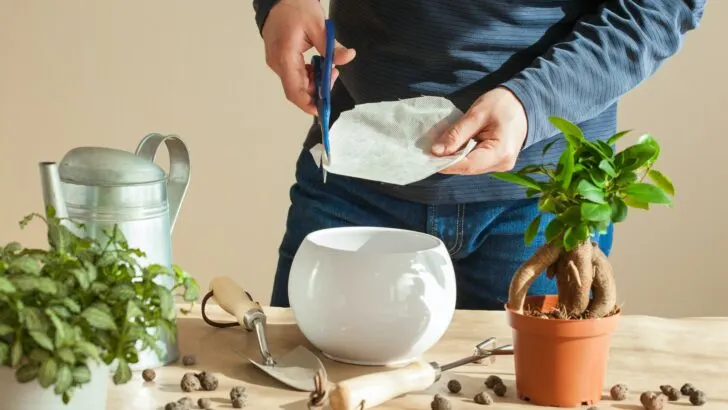
Leca vs Pon has the main benefit that it is lighter than Pon
Pon for Plants – Houseplants grow vigorously in Pon and are less prone to diseases such as root rot
Pon for Plants works great as you can add slow-release fertilizer. It is also less dense compared o most soils allowing for airflow to the roots. In addition, Pon is generally inhabited by fewer plant pests and you have fewer problems with root rot due to dense soil.

Pon for Plants has many advantages over general potting soil as it is more airy and less inhabitable for pests
Pon Soil
Pon Soil is a growing substrate that does not contain actual soil. It is a mix consisting of zeolite, lava, pumice, and slow-release fertilizer. It can be used for indoor and outdoor plants and is a way of growing plants semi-hydroponics. The manufacturer of Pon is the German brand Lechuza.
Frequently Asked Questions About Lechuza Pon
Where does Lechuza Pon come from?
Lechuza is a product from the Horst Brandstätter Group, a company based in Germany, and was launched in 2000. Playmobil, a well-known toy company selling plastic figures in Europe also belongs to the same group of companies.
What is Lechuza Pon?
Lechuza is a specific irrigation system developed by Lechuza and is sold with Lechuza Pon. Pon is granulated hydroponic soil consisting of zeolite, lava rock, pumice, and fertilizer.
How much Lechuza Pon Goes in a Balconera 50?
In a Barcelonera fit 18l (4.8 gallons) of Lechuza Pon substrate.
What does Lechuza Pon mean?
Lechuza stands for the Lechuza brand and Pon is the granulated hydroponic soil developed by Lechuza. Lechuza itself means owl in Spanish.
How to use Lechuza Pon?
You can use Lechuza Pon as a 100% substitute for potting soil or any other plant growing medium for indoor or outdoor plants. It is hydroponic soil but the regular potting soil does not have to be removed when planting with this substrate. This is unlike other hydroponic potting media such as clay balls where you have to remove all the soil.
How to water Lechuza Pon?
The Lechuza Irrigation System works with a water reservoir at the bottom of the pot. This has to be filled up once it is completely empty.

Daniel has been a plant enthusiast for over 20 years. He owns hundreds of houseplants and prepares for the chili growing seasons yearly with great anticipation. His favorite plants are plant species in the Araceae family, such as Monstera, Philodendron, and Anthurium. He also loves gardening and is growing hot peppers, tomatoes, and many more vegetables.
Last update on 2025-01-16 / Affiliate links / Images from Amazon Product Advertising API


